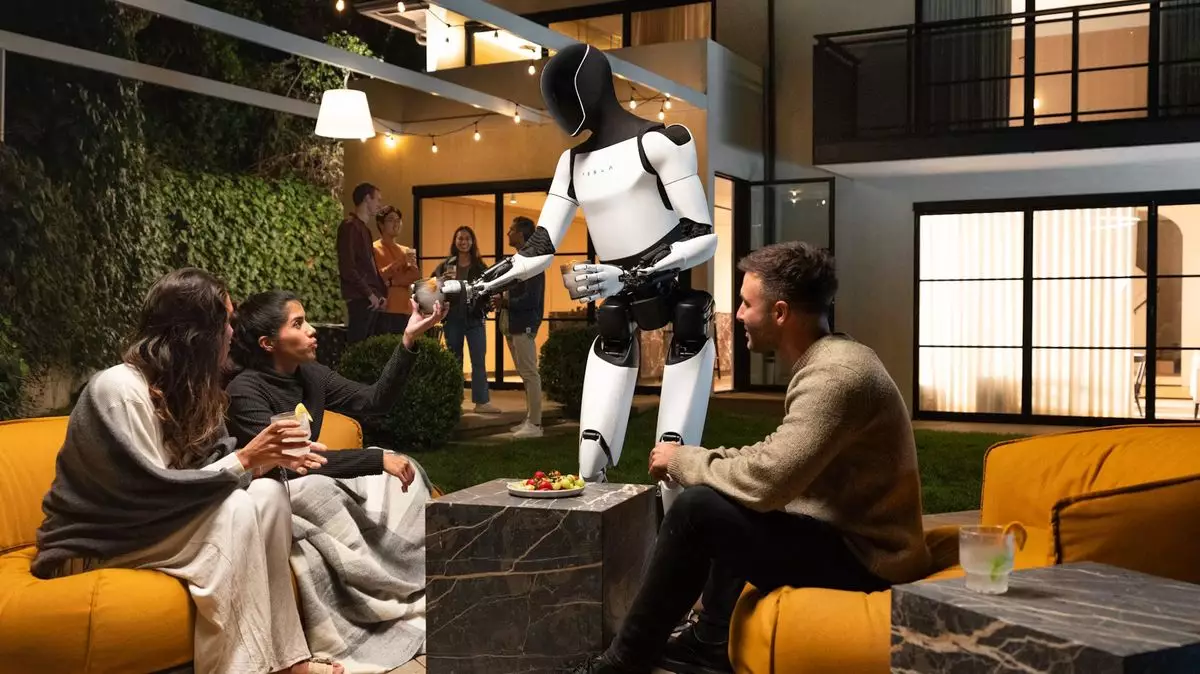In 2021, Elon Musk introduced what was intended to be a transformative leap into the realm of robotics with a humanoid robot presentation that, to an astute observer, appeared more theatrical than technological. The unveiling was marked by a curious twist: the robot ended up being just a human in a suit, sparking a mix of amusement and skepticism among tech enthusiasts and the general public alike. Fast forward to a year later, Musk showcased an actual prototype of the robot at a Tesla event dubbed “We, Robot.” This time, the robot impressed audiences with its basic capability to walk prudently without losing balance—a sign of progress, albeit a modest one in the grand tapestry of robotics.
However, the event hinted at something far more ambitious than mere mobility. Musk leaned into the hype, highlighting not only the prototype’s capabilities but also his grand vision for humanoid robots. “It’ll be able to do anything you want,” he exclaimed, proclaiming that this robotic marvel could serve as a teacher, a caregiver, or even a manual labor assistant, like walking dogs or mowing lawns. Such grand assertions, brimming with promise, stoked excitement about the potential impact these robots could have on everyday life.
Promises and Pitfalls
Despite the thrilling prospects Musk presented, a critical exploration of his statements reveals a chasm between his vision and feasible reality. During the event, Musk made grandiose claims about the robots being an essential part of life, asserting that every individual on Earth would eventually yearn for their personal “Optimus buddy.” These proclamations lend themselves to the classic pattern observed in Musk’s history—frequently unfulfilled promises that raise eyebrows when scrutinized.
It’s essential to approach his most recent assertions with caution. The early demonstrations of these robots serving drinks at a party seemed charming, but reports revealed that they were likely operating under human control rather than functioning autonomously as suggested. Several observers noted the robots exhibited movements and interactions that felt choreographed rather than independent, raising concerns about the authenticity of the experience.
Furthermore, Musk’s reluctance to clarify whether these robots are powered by advanced AI—or if they are simply controlled remotely—adds another layer of ambiguity to his claims. This vagueness suggests a strategic choice to leave onlookers clouded in speculation, possibly to maintain interest and draw attention away from the current limitations of their technology.
The Hurdles Ahead
While it’s easy to dream about a future where humanoid robots seamlessly integrate into our lives, historical context suggests a more tempered outlook. Robotics has long faced numerous challenges, including the intricacies of natural movement, decision-making in real-time, and navigating complex environments. The ongoing race towards fully autonomous vehicles evokes similar sentiments, with repeated delays and challenges demonstrating that technological breakthroughs often take longer than anticipated.
One cannot dismiss the potential of humanoid robots entirely; the field is, without question, rife with possibilities. Developers continually attempt to enhance AI capabilities, improve physical agility, and elevate sensory systems. Yet, discerning whether these robots will be market-ready shortly—or within a decade—remains speculative at best.
This skepticism does not diminish the excitement surrounding electric and autonomous technologies, but rather emphasizes the need for critical engagement with claims made by industry leaders. The technological landscape is evolving, and while optimism fuels innovation, it is prudent to temper hope with realism.
Elon Musk’s vision for humanoid robots, while captivating, invites scrutiny. The contrasting experiences of grand expectations versus practical demonstrations reveal a narrative steeped in hype rather than clear truth. Tesla’s advancements in robotics may portend exciting developments in the future; however, as history demonstrates, the journey from prototype to reality is often fraught with setbacks and revisions. It serves the tech community well to approach Musk’s ambitious announcements with an analytical lens, eager for advancements but grounded in the understanding of core technical challenges. Ultimately, the excitement surrounding these innovations warrants close observation, as progress unfolds in incremental steps rather than miraculous jumps.

